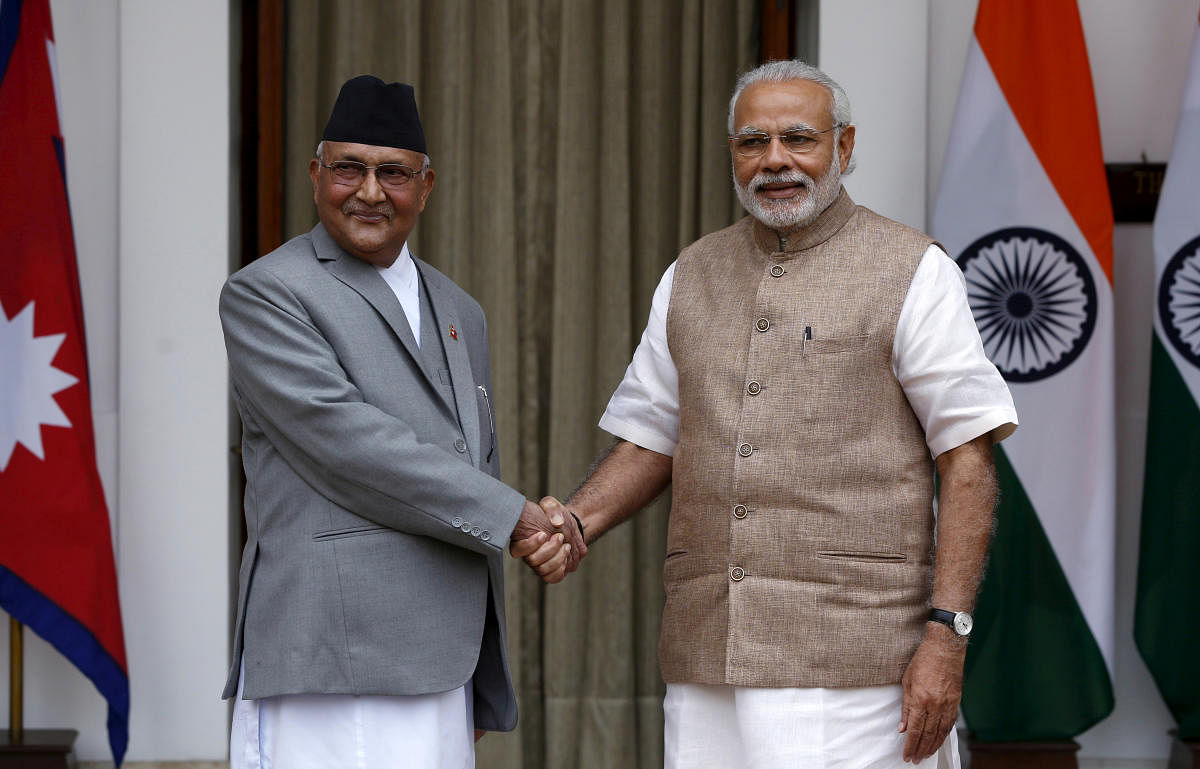The recently released new map of India has stirred an old controversy between India and Nepal over a small 35 sq km disputed area claimed by both countries. India considers Kalapani as part of Uttarakhand’s Pithoragarh district, and Nepal as part of its Darchula district. The recent map, released to depict the bifurcation of Jammu and Kashmir, has resulted in several protests in Nepal by students’ unions and political parties. The leaders have reached out to Indian officials in Kathmandu. New Delhi, on its part, has maintained that the new map does not revise the existing boundary with Nepal and that it “accurately depicts the sovereign territory of India”. As such, there is no change in the status quo, it says.
The incident brings to the fore two kinds of narratives. The first is one of cartographic aggression, as perceived by most sections in Nepal. The second relates to the larger behaviour of a modern State in its march to consolidating its power and sovereignty. While both these perceptions have been debunked by India on the ground that India only carried out a cartographic depiction of its legitimate and sovereign area on the map and that no violations of Nepal’s sovereignty had taken place, there is a need to debate the issue in the context of its larger implications for bilateral relations between India and Nepal.
It is understandable why Nepal would tend to think so. Power, capabilities and force projection are very closely linked with State behaviour, especially when contested geographies are involved. In the current century, China has led from the front in establishing a predictable relationship between force projection and contested sovereignties. This has induced apprehension among small countries, especially those overwhelmingly close to a big and powerful neighbour. As such, Nepal’s anxiety of India’s cartographic aggression emanates less from concrete developments on the ground and more from the broader trends in State behaviour worldwide.
History of the dispute
In 1816, the East India Company and Nepal signed the Treaty of Sagauli to mark out Nepal’s western border. The treaty defined river Mahakali as the western border of Nepal. River Mahakali has several tributaries, all of which merge at Kalapani. India claims that the river begins in Kalapani as this is where all its tributaries merge. But Nepal claims that it begins from Lipulekh Pass, the origin of most of its tributaries. It has therefore laid claim to all areas east of the Lipu Gad — the rivulet that joins the river Kali on its border. According to Nepal, the Kalapani area was included in the Census of Nepal until 58 years ago. According to some quarters, the late Nepalese King Mahendra had “handed over the territory” to India in 1962 in the wake of the India-China war. A report submitted on the subject to the Nepali prime minister further claimed that India had occupied an additional 62 sq km land. India on its part has presented administrative and tax records dating back to 1830s to back its claims. A map of 1879 also shows Kalapani as part of British India.
It is interesting to note that this long-standing issue only gained prominence after India and Nepal signed the Treaty of Mahakali in 1996. Both countries have been trying to resolve the issue of Kalapani and another vast area along the Nepal-Uttar Pradesh border, Susta. In 1981, a Joint Technical Boundary Committee was formed. While it could resolve a large part of the dispute, no final settlement could be reached. The progress in the matter has been very slow. In 2014, both countries held a joint commission meeting led by their foreign ministers. In 2016, an Eminent Persons Group was formed to look into several bilateral issues, including the border dispute and the Peace and Friendship Treaty of 1950. The border issue was escalated in March 2017 when a Nepali was killed as India’s Border Security Forces opened fire in Kanchanpur district, near the Nepal-India border
Incidentally, Kalapani is a trijunction meeting point of India, Tibet and Nepal borders. The region has been manned by the Indo-Tibetan Border Police since 1962. This has led to fear of Chinese involvement also. Nepal has also raised concern over Lipulekh Pass, which has been made a trading tri-junction route between India and China, reportedly without Nepal’s consent, since 2015. The Indian side claims that Lipulekh pass has been referred to as a border trading point since 1954 and that the new positions depict an anti-Indian sentiment to gain greater political mileage.
The flaring up of this issue is bound to add further tension in the India-Nepal relationship. The ties had received an impetus when Prime Minister Narendra Modi came to power in 2014. Nepal was invited as a SAARC member for Modi’s swearing-in ceremony. Modi visited the Himalayan nation soon after announcing his ‘neighbourhood first’ commitment. India was quick to respond to the earthquake that ravaged Nepal in 2015. It is another matter that the narrative from our chest-thumping media drew flak from several quarters. Nepal also continued to blame India for interfering in its internal matters. The relationship deteriorated considerably after the unofficial blockade of Nepal in 2015.
Despite this, India still enjoys great leverage with Nepal. India is Nepal’s largest trading partner, and the two countries are culturally intertwined. In the past, India has played a considerable role in maintaining stability and development in Nepal. As China’s clout grows in the region and India’s tensions with Pakistan exacerbate, India needs friends in the neighbourhood. It is therefore imperative that India manages such incidents with diplomatic finesse so that an anti-India feeling does not emerge among the Nepali leaders and general populace.
(Shreya is a Senior Researcher, India Bound, Bengaluru; Mishra is Deputy Director, Kalinga Institute of Indo-Pacific Studies)
